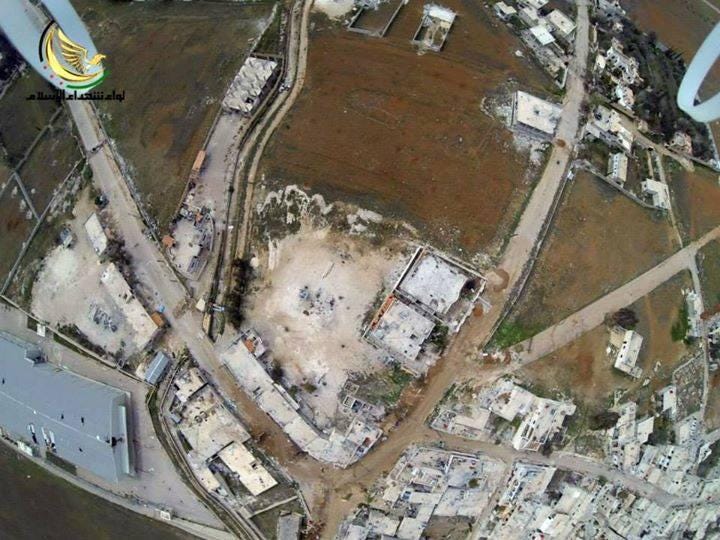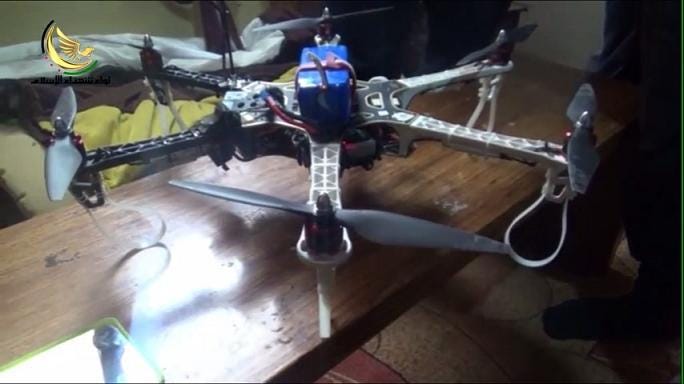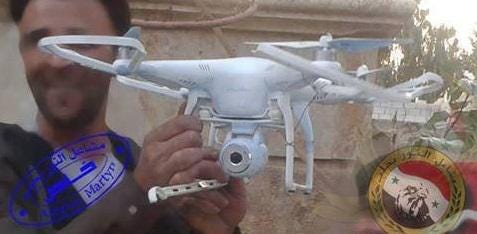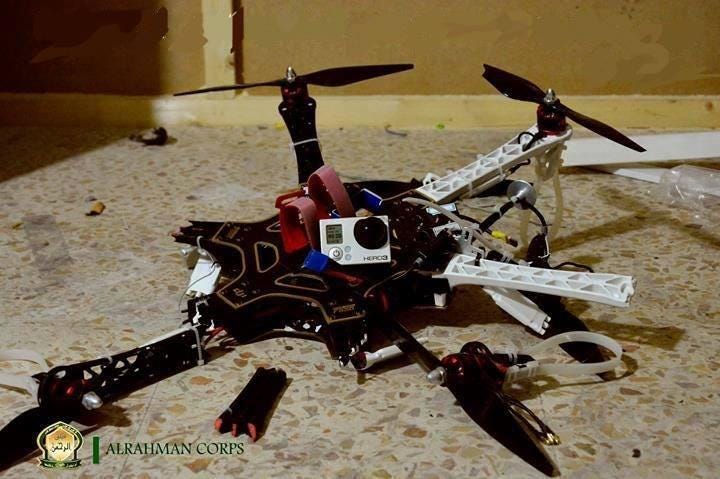Loyalists and rebels spying on each other with off-the-shelf robots
Jassem Al Salami in War is Boring
It appears the Syrian army is spying on rebel forces using the same drones that consumers can buy for just a couple thousand dollars. And the rebels might be using similar flying robots to spy right back.
It’s a do-it-yourself robot battle over war-ravaged Syria.
Al Rahman Corps, a Syrian rebel group in Eastern Ghouta near Damascus have displayed a six-rotor drone—a.k.a., a “hexacopter”—they claim to have shot down the over the town of Meliha during the current flare-up in fighting.
The rebels say they have shot down two of the hexacopters in recent weeks.
In early April, forces loyal to Syrian president Bashar Al Assad launched an offensive to retake Meliha, an area the regime has also subjected to deliberate starvation by blocking food convoys.
Rebels were able to access footage they say was obtained by one of the drones. That robot was carrying a simple commercial camera and probably didn’t have the ability to transfer footage to its operator in real time.
Likewise, the rudimentary drone likely couldn’t navigate autonomously. It probably depended on an operator on the ground maintaining direct line of sight with the ’bot and steering it manually.
 Drone footage. Al Rahman Corps photo
Drone footage. Al Rahman Corps photo
Rebels claim that drones are coming from former headquarter of the Syrian air-defense force, a stronghold for Al Assad loyalists near Meliha.
The loyalist forces reportedly include fighters from the Lebanese militant group Hezbollah as well as from the Iraqi militia group Asa’eb Al Haq. A senior Hezbollah commander and several Iraqi fighters died when rebels repelled the first wave of the Meliha attack.
All drones previously spotted over Syria—and particularly over eastern Ghouta, have been of Iranian origin. It’s possible the hexacopters also came from Iran.
 Another captured drone. Al Rahman Corps photo
Another captured drone. Al Rahman Corps photo
The presence of hexacopters might reflect a shift of thinking on the part of Iranian commanders. Up ’til now, they’ve deployed medium-altitude Pehbaddrones. The Pehbad operators were Iranian air force officers. The footage the ’bots obtained passed to a special air force recon branch, which then forwarded it to ground-force liaisons and onward to the infantry and artillery.
But that took too long. Urban fighting in Syria moves fast, meaning thePehbad imagery was out of date by the time it reached front-line forces.

A captured rebel drone. Photo via author
The new commercial drones could be meant to close the time gap. But the hexacopters’ inability to send imagery in real time is still a major limitation. Rebels need only change positions as soon as they spot a drone overhead.
The rebels have small drones, too. The same day the first hexacopter crashed in Meliha, Al Assad’s forces in northern Aleppo captured a quad-rotor robot they say belonged to rebels. The quadcopter also seems to be a commercial model carrying a simple camera.
The three-year-old Syria conflict has been in deadlock, with neither side gaining ground. Loyalists and rebels alike are becoming desperate—and willing to try anything new. Including off-the-shelf drones.

No comments:
Post a Comment